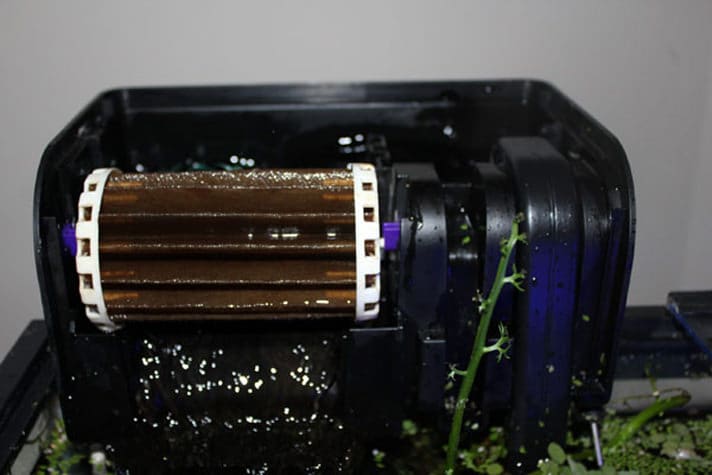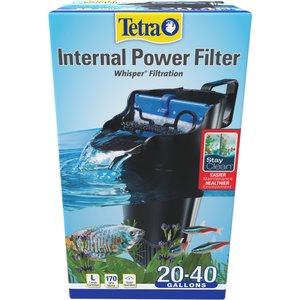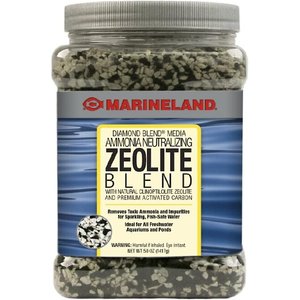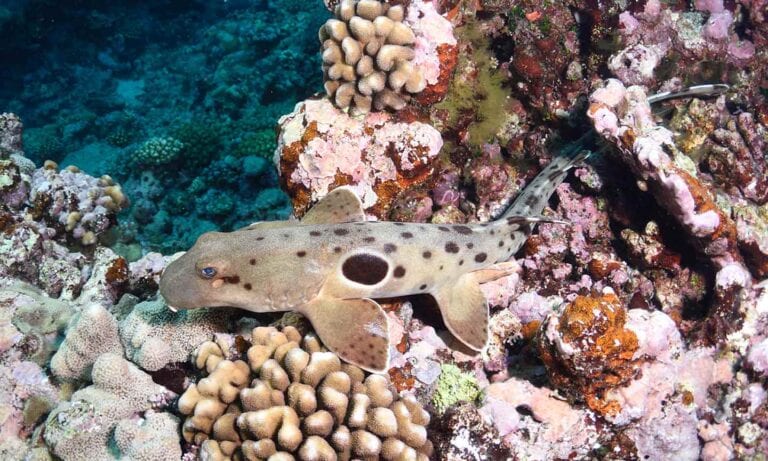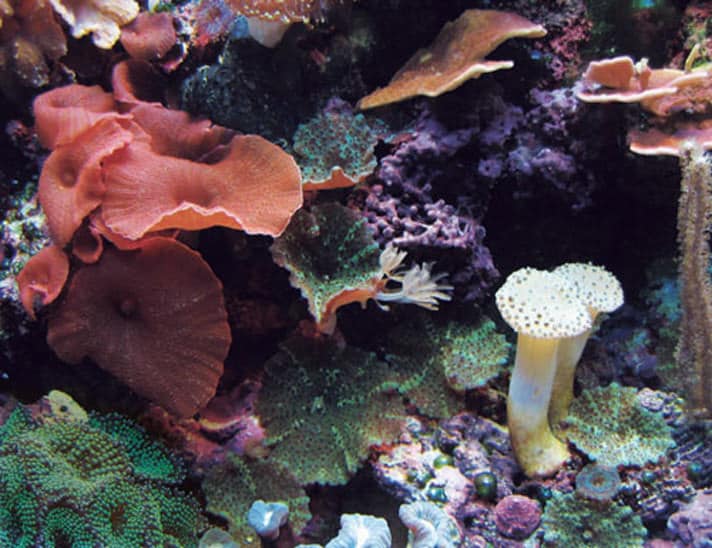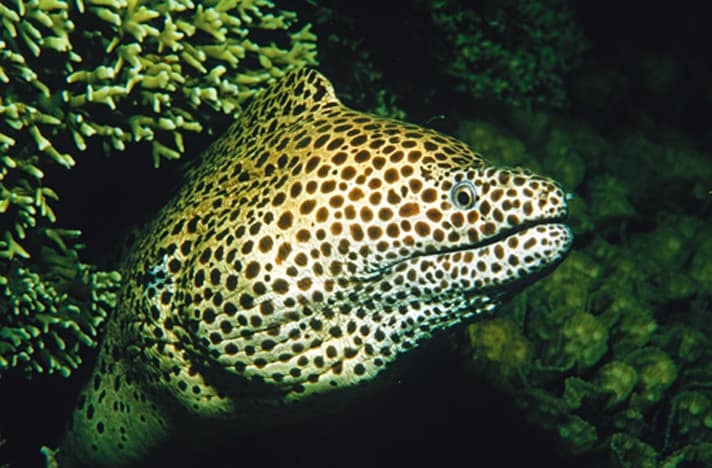Aquarium filtration saw monumental advances in technology during the late 1970s through the mid-1990s. This was primarily due to a better understanding of the science associated with maintaining excellent water quality. Strange as this may seem, many of our fishes will live considerably longer in our care than they would in the wild due to our understanding of tank cycling and good water quality. Filtration is a major contributor in maintaining high water quality. But none of the fish tank filters will solely keep the water clean for an indefinite period. Partial water changes coupled with routine filter maintenance greatly increase aquarium success.
Canister Filter
Use a canister filter brush for getting into small areas and cleaning the hoses.
How Often do You Clean a Filter?
All things being in moderation, filtration maintenance can be conducted on a regular schedule. Moderation is defined as not overstocking or overfeeding. That means, don’t inhumanely cram 300 adult fish into a 50 gallon aquarium and expect to do anything on a routine basis except react to crisis.
Establish a Schedule
It is easy to forget when a filter was last serviced, especially if you have multiple aquariums with different types of filters. To help remember, attach a small piece of masking tape on the side of the tank and write the date of service with an indelible marker. Some filters such as hang-on-the-back (HOB) require cleaning every few weeks while canister filters may go four months between service intervals. Sponge (biological) filters should be cleaned every two weeks. Vacuum the gravel bed of an undergravel filter every two weeks unless it is a reverse flow with pre-filter in which case monthly servicing should be sufficient. In-tank power filters should be serviced every two to three weeks.
How do You Service a Filter?
First and foremost, remember to take precautions to preserve the beneficial bacterial living in the filter. For example, a canister filter contains a medium such as bio-balls for growing massive quantities of bacteria. The media must be kept wet during maintenance. Protect the bacteria growing on this medium by rinsing the balls in either old tank water (best choice) or water treated to remove the chlorine. I’ve chosen to discuss the maintenance of two types of filters that have resulted in the most questions over the years.
Canister Filters
Make sure you have a spare sealing ring also called a seal gasket. This is the large O-ring that seals the canister motor to the body. Few things are more stressful than discovering the sealing ring needs replacement after cleaning and reassembling the filter. Not all pet shops stock these items requiring mail order service. Begin by listening to your filter. A rattling sound normally indicates the impeller is worn and needs replacement. If this is the case, obtain a replacement impeller prior to servicing the filter.
Always unplug the in-line heater (if equipped) a few minutes prior to turning off the canister’s motor. This will allow the heater to cool down before the water flow stops. Fill a bucket half full with the tank’s water. The bucket water will be used to temporarily hold the filter’s media (keeping the media wet) while the canister, impeller and hoses are cleaned. Close the sink drain before removing and rinsing the impeller otherwise small parts like bushings are easily lost down the drain. Scrub the impeller with a soft brush and rinse in tepid water. Never boil an impeller in an attempt to remove build up. Prolonged extreme heat weakens some magnets and softens the glue holding parts together. Use a canister filter brush for cleaning the filter’s small areas and hoses. Clean the sealing ring by wiping it with a terry cloth towel. Clean the seal seat (where the seal goes on the filter) with a terry cloth towel. The seat area must be completely clean of any debris. Reinstall the sealing ring making sure it is properly seated on the canister.
HOB Filters
When cleaning HOB filters to keep biowheels and biosponges from drying out or contacting chlorine, float them in the tank during maintenance. Photo by Stephen G. Noble
Leaks after maintenance are usually from improperly cleaned or improperly seated seal rings. Restarting a canister filter is very easy. Some come equipped with a pump primer to refill the canister. Here is a good method for getting your filter primed if you have one that does not have a built in primer: Using tank water, fill the canister to about one-inch from the top. Make sure the hose shut off valves are in the open position. Carefully install the motor taking care to ensure the seal ring is properly seated. Take a funnel and position it on the intake hose. The intake hose is the one that draws tank water into the filter. Pour tank water into the funnel until water exits the return side hose. Keep the water pouring and quickly shut off the intake side. Use the funnel to fill any air spaces on the return side and turn off that valve when it overflows. The canister is now completely filled and ready to be connected to the tank.
Sponge Filters
All of my aquariums have two filters, one of which is always an air driven or powered sponge filter. Sponge filters are sensational biological beds. If powered, clean the impeller in the same manner as a canister filtration impeller. Air driven sponges require the air pump and lines to be serviced too. Use a round tooth pick to clean any debris from where the air line hose connects to the plastic sponge frame. This is a maintenance area that is often overlooked.
Algae, goo and debris can restrict air flow at the connection point creating reduced water flow and damaging back pressure on the air pump’s diaphragm. Most air pumps have a small air filter on the underside of the pump. Clean or replace the air filter when it becomes discolored. I make new filters from blue and white bonded filter material. Simply cut a circle of the bonded material slightly larger than the hole and stuff it in. Untreated tap water should never be used to clean a sponge because the chlorine will kill the bacteria colony. The sponges are best cleaned by adding a few inches of tank water to a bucket. Gently squeeze the sponge a few times in the bucket water until the water is coffee colored. Use the nutrient rich dirty water on your house plants – they love it. Put more tank water into the bucket and repeat the process until the water is mostly clear. The sponge is now ready to be returned to the tank. Never let the sponge dry out during maintenance otherwise the bacteria will die.
Cleaning hang-on filters is essentially a combination of canister and sponge maintenance. Cleaning the impeller and hoses are the same and treat the sponge and biological media as mentioned above.
The use of more than one filter in your tank allows alternate week cleaning which is safer for preserving your beneficial bacteria and seems to be less stressful to the fish. This is especially helpful if for some reason, you make a mental error and let the media dry out or come into contact with untreated water. You only lose one filter and that is huge if your tank is heavily stocked.
Regular filter maintenance is essential for a healthy tank. It is not safe to assume that clear water is an indication of a clean filter. Enjoy your fish!
Stephen Noble has more than 35 years of experience propagating aquatic, marsh and terrestrial plants. His many planted tanks range from natural to high-tech aquariums. Follow him on Twitter @StephenGNoble
Featured Image: Via Stephen Noble
Aquarium Maintenance
Share:
